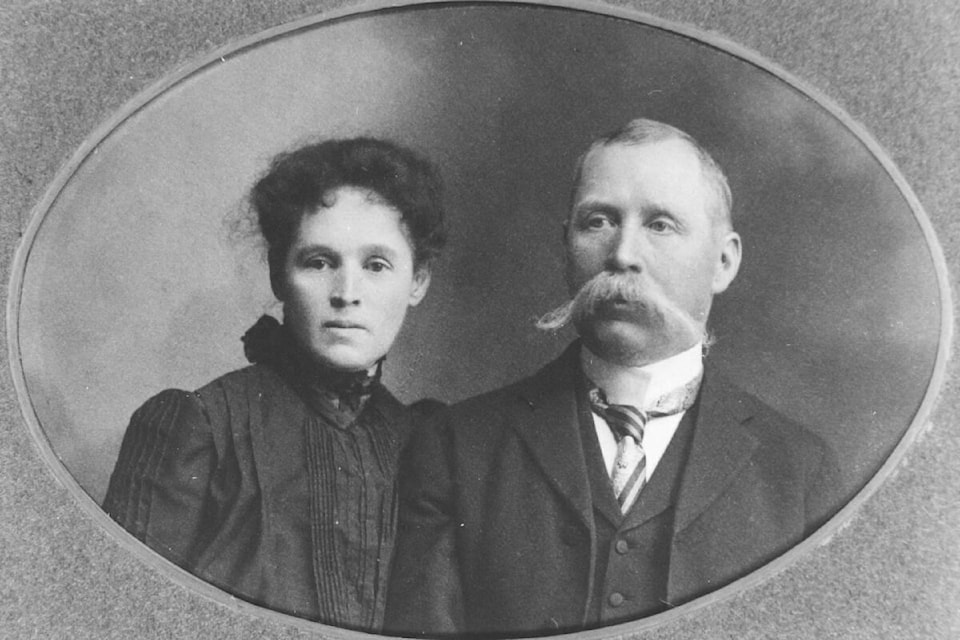Terry Hurst
Vernon’s Lost Street Names
Few men in the valley’s early history had the charisma and influence of Price Ellison.
His name was given not merely to Vernon streets, but to Ellison Park, Ellison Peak, Ellison Lake and District near Winfield, Ellison Post Office (in Larken train station), Ellison Hall in Summerland and Ellison Ridge separating Kalamalka from Okanagan Lake.
Ellison School was named for his wife Sophie, who was Vernon’s first school teacher.
Ellison, a journeyman whitesmith, worked his way across the continent in 1871 at age 17.
Eventually reaching B.C. at age 23, he walked from Hope to the Okanagan and discovered Priest’s Valley.
His 1,280-acre pre-emption included Polson Park, part of East Hill and both sides of Vernon Creek toward Kalamalka Lake.
His blacksmith shop (which stood just south of the Science Centre), prompted the name Forge Valley.
In 1884, Sophie Johnson arrived with a cousin to visit their uncle, Peter Anderson, a pioneer fur-trader whose pre-emption lay adjacent to Ellison’s.
On the last leg of her long journey by train and boat from Peoria, Illinois, she rode sideways on a stock saddle from Kamloops to Priest’s Valley. She arrived in May and by October had become Vernon’s first school teacher.
On Dec. 1, after a whirlwind courtship, she married Ellison despite her family’s strenuous objections. The nearest white women were Mrs. Greenhow and Mrs. O’Keefe, eight miles away.
The marriage was a happy one, and the Ellisons were renowned for their hospitality. They had four daughters and four sons (in that order).
Ellison, steadily acquiring farms and acreages, became one of the most successful ranchers in the valley. His grain won first prize at the 1892 Chicago World’s Fair. By 1916, he held 11,000 acres, ran 2500 cattle and 300 horses, and was the largest wheat grower in B.C.
In 1893, he invested in the Vernon News. Though politically conservative, he insisted that the newspaper remain as unbiased as possible.
Ellison always declined to run for mayor, but in 1898 he was elected to the Provincial Legislature, eventually appointed Commissioner of Lands and, in succeeding elections, Minister of Finance and Agriculture. During his tenure, Ellison’s foresight saw the completion of several major projects in Vernon, including construction in 1904 of the Vernon-Oyama highway (then called “Price Ellison’s folly” for its expense); and the Court House in 1912, also considered too costly and elaborate. He lost his last election bid in 1924.
In 1925, at the age of 73, he suffered a stroke from which he never fully recovered. He died of pneumonia in 1932 at the age of 81.
